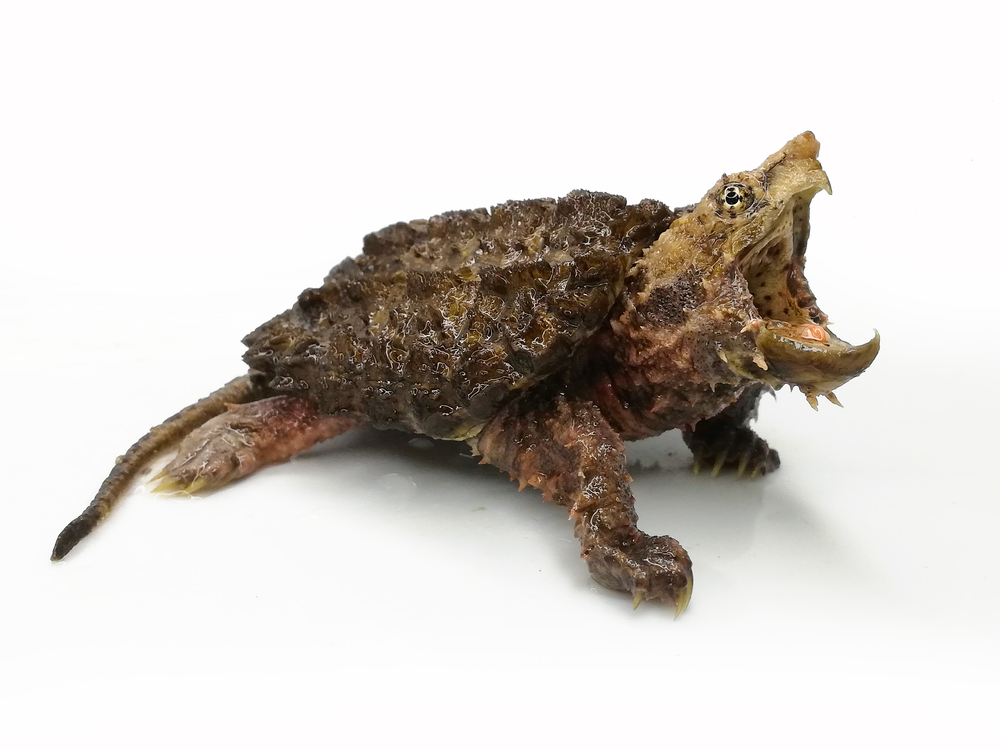The alligator snapping turtle is the largest freshwater turtle in the world. With a carapace reaching over a meter in length, these goliaths are some of the most impressive Chelonia on the planet. They are frequently captive farmed in the US which allows for a good number of hatchlings to occasionally pop up in the UK. However, in the wild, populations of this species are slowly dwindling, and they are now considered vulnerable by the IUCN.
Sharing both a name and overlapping range with Alligator mississipiensis, this turtle inhabits most of the Southeast United States, except tropical Florida. They are almost exclusively aquatic and will spend up to 50 minutes submerged in water, waiting to ambush aquatic prey. Like ominous angler fish, or various vipers, the alligator snapping turtle uses its tongue as a lure to bring unsuspecting fish within striking distance. These turtles can spend so long stationary, in ambush position, that a thick layer of algae often covers their entire carapace making them almost invisible to fish.
Although legend states the largest alligator snapping turtle ever recorded weighed 182kg and was discovered in Kansas in 1937, the heaviest official record of an alligator snapping turtle was 107kg and was kept at Brooklyn Zoo. This enormous size is very different to their distant cousins, the common snapping turtle (Chelydra serpentina). In fact, C. serpentina is much smaller, much more active and does not hunt using a lure.

Alligator snapping turtle (Mackrochelys temminckii) husbandry
Naturally, housing alligator snapping turtles in captivity requires an enormous enclosure. While they are reasonably inactive (prompting lots of people to keep them in plastic tubs in the 90s), they will require a large volume of water. The biggest challenge here is keeping that water clean, as alligator snapping turtles will feed on fish, beef, pork, frogs, clams, crayfish, plants and even other turtles. Moving the alligator snapping turtle from its enclosure is also risky business, with a sharp beak and 208 newtons of bite force, the alligator snapping turtle could easily take a finger or break a bone.
In terms of captive care, the alligator snapping turtle is much more stationary and generally less interactive than common snapping turtles. They are also slightly less aggressive and will instead, keep their mouth wide open, waiting for an opportunity to bite. The common snapper, on the other hand, which will often launch a barrage of bites. Serious consideration needs to be taken, as to whether this animal is suitable for any captive keeper and misidentification from the novice turtle keeper will surely lead to problems down the line.
Click here to read about how artificial light confuses hatchling loggerhead sea turtles.
